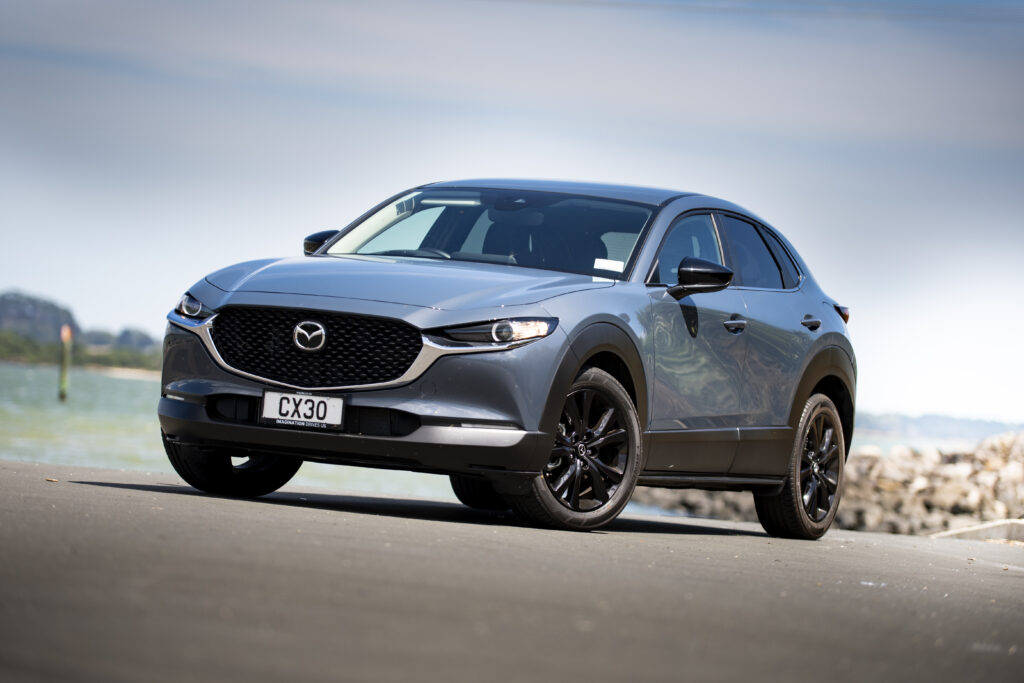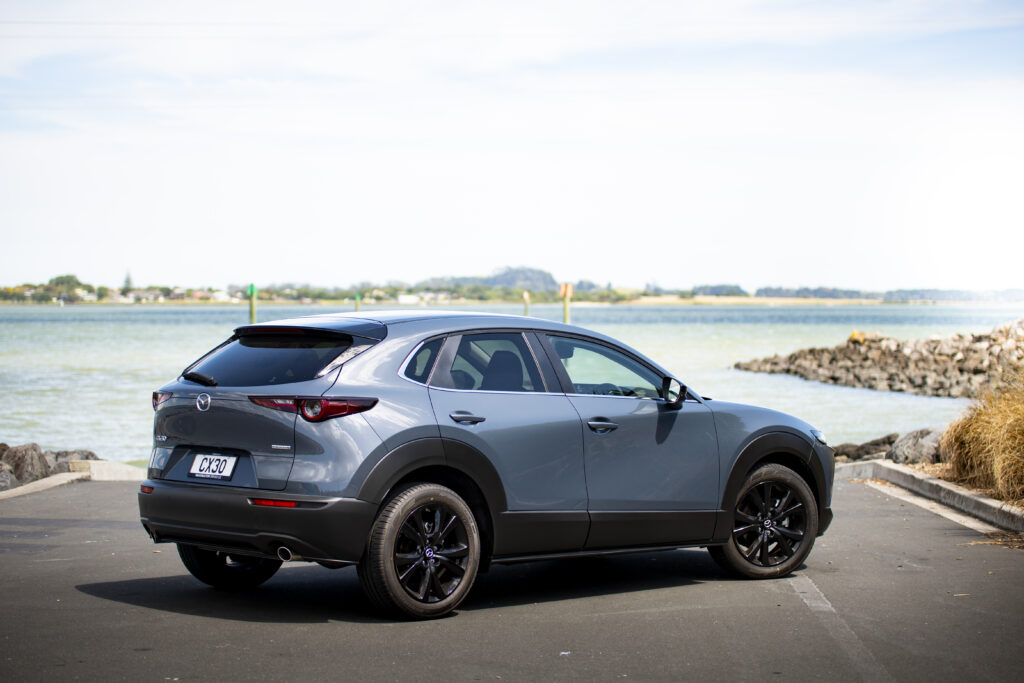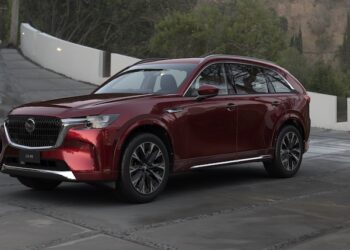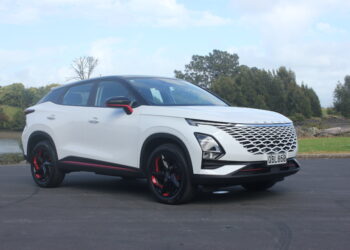
Though it has the funky looking MX-30 in its arsenal, Mazda has few other options for people shopping for electrified vehicles.
Almost most all of Mazda’s mainstream nameplates remain exclusively combustion engine powered.
That’s set to change in the short- to medium-term, with Mazda saying it will launch 13 models by 2025 with electric assistance.
But you don’t necessarily need to wait until then to snap up a Mazda hybrid.
The Japanese marque’s e-SkyActiv X M-Hybrid electrified powertrain has debuted locally in the Mazda3 compact and in the CX-30, and we got our hands on the latter for an up-close look.
THE NUMBERS
Mazda’s CX-30 line-up is surprisingly complex. There are five trim levels with four different powertrains.
The M-Hybrid features in the flagship front-wheel drive and all-wheel drive grades. The pictured SP20 Blackout Edition is the former, with the 2.0-litre AWD Takami leading the line-up.
Doubling as the cheapest way to get behind the wheel of a CX-30 M-Hybrid, the SP20 is priced from $44,790.
For your money, you get a 2.0-litre capable of producing 114kW of power and 200Nm of torque and paired to a six-speed automatic gearbox.
Not all hybrid systems are created equally. The CX-30’s is a clear mild-hybrid, utilising the proven formula of adding a separate battery to store energy gained through regenerative braking. This energy is then used to support the car’s main petrol engine.
The CX-30 shares its platform with the Mazda3, meaning the two have similar dimensions. Being an SUV, the 30 is much taller (giving the driver a more commanding seating position).
It’s also a bit shorter, making it the easier of the two to slip into parking spaces. Its 430-litre boot capacity is considerably more generous than the 3 hatch, and almost lineball with the 3 sedan.
OUTSIDE
For people new to the party, Mazda’s SUV nomenclature is worth explaining.
Models with a single-number suffix like the CX-5 represent the brand’s more traditionally proportioned and shaped crossovers.
Those with a double-digit suffix though, like the CX-30, are intended as a more chic and stylish take on the genre.
The CX-30 delivers, as arguably the most striking looking vehicle in the compact crossover space. It sports Mazda’s unmistakable Kodo design language, making use of meticulously sculpted body lines and surfacing to create fascinating shadows and reflections in the light.
The beefed-up black plastic cladding might be an acquired taste for some (particularly those who prefer the look of the Mazda3 hatch), but it’s par for the course in this segment.
I suppose we should also mention the Blackout Edition aspects. They include black 18-inch wheels and wing mirrors. Oddly enough the chrome window trim and grille remain … perhaps for the better as far as styling is concerned.
INSIDE
The CX-30’s position as a segment leader in the looks department continues inside.

Its dashboard layout might be a few years old, but it continues to age gracefully. It’s aided by Mazda’s commitment to premium materials and build quality, ensuring that the CX-30 is more pleasant inside than most of its Japanese and Korean peers.
Standard kit includes satnav, wired phone connectivity, an 8.8-inch screen and seven-inch digital cluster, and cloth seats.
Its safety tech suite is fairly comprehensive, too, including stop and go radar cruise control, lane keep assist, rear cross-traffic alert, and frontal AEB with pedestrian and cyclist detection.
It isn’t perfect. The infotainment interface feels a little dated (other models, like the BT-50 ute we drove following the CX-30, come with the brand’s latest software), and isn’t helped by the lack of touch functionality.
And although rearward visibility is better than in the 3 hatch, it’s still more difficult to see out of than a Kia Seltos or Toyota Yaris Cross.
But, arguably unlike those two, the CX-30 feels special to sit inside. And, even with the slick roofline, you can fit a couple of adults in the back.
THE DRIVE
Mazdas tend to be sharp steerers, and the CX-30 is no exception. Although it’s taller than the Mazda3 it feels similarly planted and responsive when tackling a challenging piece of road.
No doubt, that’s aided by the latest version of Mazda’s brake-based torque vectoring system. The trade-off for competent handling is ride quality, and the CX-30 rides a touch firmer than its peers.
So to the powertrain. Its 114kW/200Nm output is humble on paper, and as it turns out it’s also fairly humble in the metal.
Drivers with fond memories of Mazda’s early noughties SP20 hot hatch should probably park those at the door because this is no hot SUV.
Quick enough is perhaps better phrasing, with the occasionally coarse 2.0-litre capable of moving with enough aplomb to appease the average crossover customer.
More relevant is the M-Hybrid’s potential fuel economy gains. Again, there are no big headline numbers to be had here.
Mazda quotes a potential combined economy of 7.0 litres/100km and we saw best figures of 6.5 litres/100km, a number I’ve previously achieved in the 2.5-litre non-hybrid Mazda3.
OUR VIEW
Is the CX-30 a disappointing hybrid? Possibly, although to focus only on its mild-hybrid powertrain living up to what it says on the tin would be to miss the greater point of the CX-30.
Though there are undoubtedly more frugal and mechanically sophisticated cars in this class, precious few are so welcoming and homely.









